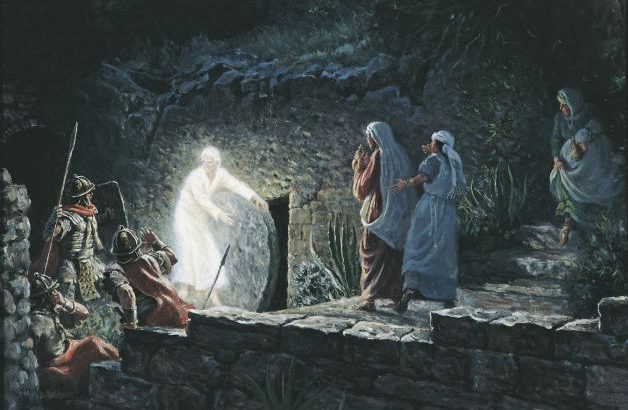Soren Kierkegaard once wrote that the Gospel text he strongly identified with is the account of the disciples, after the death of Jesus, locking themselves into an upper room in fear and then experiencing Jesus coming through the locked doors to bestow peace on them. Kierkegaard wanted Jesus to do that for him – to come through his locked doors, his resistance and breathe peace inside him.
That image of locked doors is one of two particularly interesting images inside the story of the first Easter. The other is the image of the ‘large stone’ that entombed the buried Jesus. These images remind us of what often separates us from the grace of the resurrection. Sometimes for that grace to find us someone must ‘roll away the stone’ that entombs us and sometimes the resurrection must come to us ‘through locked doors’.
Anxious
First, about the ‘stone’. The Gospels tell us that early on Easter morning, three women were on their way to the tomb of Jesus intending to embalm his body with spices but they were anxious about how they would remove the large stone that sealed the entrance of his tomb. They were asking each other: “Who will roll away the stone?”
Well, as we know, the stone had already been rolled away. How? We don’t know. Jesus’ resurrection happened with no-one there. Nobody knows exactly how that stone was rolled away. But what Scripture does make clear is this: Jesus didn’t resurrect himself. God raised him. Jesus didn’t roll away the stone, though that’s what we generally assume. However, and for good reason, both Scripture and Christian tradition strongly affirm that Jesus didn’t raise himself from the dead, his Father raised him. This might seem like unnecessary point to emphasise; after all, what difference does it make?
It makes a huge difference. Jesus didn’t raise himself from the dead and neither can we. That’s the point. For the power of the resurrection to enter us something from beyond us has to remove the huge, immovable rock of our resistance. This is not to deny that we, ourselves, have goodwill and personal strength; but these, though important, are more a precondition for receiving the grace of the resurrection than the power of the resurrection itself, which always comes to us from beyond.
We never roll back the stone ourselves!
As a Christian community and as individuals we are still mostly huddling in fear, anxious about ourselves”
Who can roll back the stone? Perhaps that isn’t a question we’re particularly anxious about, but we should be. Jesus was entombed and helpless to raise himself up, all the more so for us. Like the women at that first Easter, we need to be anxious: “Who will roll back the stone?” We can’t open our own tombs.
Second, our “locked doors”. It’s interesting how the believers at that first Easter experienced the resurrected Christ in their lives. The Gospels tell us that they were huddled in fear and paranoia behind locked doors, wanting only to protect themselves, when Christ came through their locked doors, the doors of their fear and self-protection, and breathed peace into them.
Their huddling in fear wasn’t because of ill-will or bad Faith. In their hearts they sincerely wished that they weren’t afraid, but that goodwill still didn’t unlock their doors. Christ entered and breathed peace into them in spite of their resistance, their fear and their locked doors.
Things haven’t changed much in 2,000 years. As a Christian community and as individuals we are still mostly huddling in fear, anxious about ourselves, distrustful, not at peace, our doors locked, even as our hearts desire peace and trust.
Perhaps, like Kierkegaard, we might want to privilege that scripture passage where the resurrected Christ comes through the locked doors of human resistance and breathes out peace.
Moreover, this year, given this extraordinary time when the coronavirus (Covid-19) has our cities and communities locked down and we are inside our individual houses, dealing with the various combinations of frustration, impatience, fear, panic and boredom that assail us there.
Right now we need a little extra something to experience the resurrection, a stone needs to be rolled away so that resurrected life can come through our locked doors and breathe peace into us.
At the end of the day, these two images, ‘the stone that needs to be rolled away’ and the ‘locked doors of our fear’, contain within themselves perhaps the most consoling truth in all religion because they reveal this about God’s grace: when we cannot help ourselves we can still be helped and when we are powerless to reach out, grace can still come through the walls of our resistance and breathe peace into us.
The resurrected Christ can come through locked doors and roll back any stone that entombs us”
We need to cling to this whenever we experience irretrievable brokenness in our lives, when we feel helpless inside our wounds and fears, when we feel spiritually inept, and when we grieve loved ones lost to addictions or suicide. The resurrected Christ can come through locked doors and roll back any stone that entombs us, no matter how hopeless the task is for us.


 Fr Ronald Rolheiser
Fr Ronald Rolheiser
